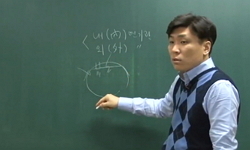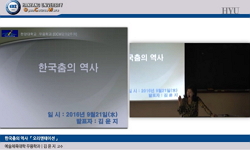본 논문에서는 교역국간의 총수출을 16개의 부가가치 요소로 나누는 Wang-Wei-Zhu 분해법을 이용하여 독일과 한국 자동차 부문의 총 회계 구조를 비교 분석하였다. Wang-Wei-Zhu 분해법은 일련의 분...
http://chineseinput.net/에서 pinyin(병음)방식으로 중국어를 변환할 수 있습니다.
변환된 중국어를 복사하여 사용하시면 됩니다.
- 中文 을 입력하시려면 zhongwen을 입력하시고 space를누르시면됩니다.
- 北京 을 입력하시려면 beijing을 입력하시고 space를 누르시면 됩니다.

독일과 한국 자동차 산업의 글로벌가치사슬에 관한 비교연구 = A Comparative Study on the Global Value Chains of the German and Korean Automobile Industry
한글로보기https://www.riss.kr/link?id=A107368586
-
저자
( Esambe Sone ) (부경대학교) ; 고종환 ( Jong-hwan Ko )

- 발행기관
- 학술지명
- 권호사항
-
발행연도
2021
-
작성언어
-
-
주제어
Global Value Chain ; Germany ; Korea ; Automobile Industry ; World Input-Output Tables ; Vertical Specialization ; Value-Added Exports ; 글로벌가치사슬 ; 독일 ; 한국 ; 자동차 산업 ; 세계투입산출표 ; 수직적 특화 ; 부가가치 수출
-
등재정보
KCI등재
-
자료형태
학술저널
- 발행기관 URL
-
수록면
43-68(26쪽)
-
KCI 피인용횟수
0
- 제공처
-
0
상세조회 -
0
다운로드
부가정보
국문 초록 (Abstract)
본 논문에서는 교역국간의 총수출을 16개의 부가가치 요소로 나누는 Wang-Wei-Zhu 분해법을 이용하여 독일과 한국 자동차 부문의 총 회계 구조를 비교 분석하였다. Wang-Wei-Zhu 분해법은 일련의 분해과정을 통하여 국제 생산 공유의 패턴을 이해하는데 도움이 된다. 자동차 총수출의 16개의 부가가치 요소는 크게 수출에 내재된 국내 부가가치와 해외 부가가치로 나눌 수 있는데, 본 논문에서는 다시 8개의 부가가치 구성요소로 재구성하여 설명하였다. 본 연구에 활용된 자료는 2014년을 기준년으로 2016년에 발표된 세계투입산출표(WIOD)이다. 자동차 생산 세계 순위를 기준으로 세계투입산출표에 포함된 총 43개국 중 14개국을 선정하고 나머지 국가는 기타 국가(ROW)로 통합하여 총 15개국을 연구 대상으로 하였으며, 총 56개 산업은 자동차, 제약, 건설 등 주요 산업과 함께 30개의 산업으로 통합하였다.
분석 결과를 보면 생산자 가격으로 평가한 총 생산량과 중간재 소비와 관련된 부가가치 수출(VAX) 비율이 양국간 큰 차이가 있음에도 불구하고 독일과 한국의 주요 수출국은 미국이다. 독일 자동차 부문의 수직적 특화(VS) 비율은 한국보다 큰 것으로 분석되었다. 독일과 한국 모두 자동차 수출에 있어서 글로벌 공유 양식을 보이고 있는 것은 흥미로운 일이다. 또한 최종 수출품에 포함된 독일의 해외 부가가치 중 캐나다가 차지하는 비중이 가장 높은 것으로 분석된 반면, 최종 수출품에 포함된 한국의 해외 부가가치 중 프랑스가 차지하는 비중이 가장 큰 것으로 분석되었다.
다국어 초록 (Multilingual Abstract)
This paper aims to do a comparative study on the gross accounting structures of the automobile sectors of Germany and Korea using the Wang-Wei-Zhu decomposition method, which splits bilateral gross exports into 16 value-added components. This method a...
This paper aims to do a comparative study on the gross accounting structures of the automobile sectors of Germany and Korea using the Wang-Wei-Zhu decomposition method, which splits bilateral gross exports into 16 value-added components. This method assists in producing a series of decomposition results to show how such a structural decomposition can help us to better understand the pattern of international production sharing. These components can broadly be divided into domestic and foreign value-added in exports. The data source is the World Input-Output Database (WIOD), released in 2016, with 2014 as the base year. Fourteen countries out of the 43 countries in the database were selected based on their world rankings in the production of automobiles, and the remainder of countries was aggregated into the rest of the world (ROW), giving a total of 15 countries, while the 56 industries in the database were aggregated into 30 industries with some key industries such as automobiles, pharmaceuticals, construction, and so on.
The results of this analysis show that the principal export destination of both Germany and Korea is the United States, despite the countries’ huge differences in value-added export (VAX) ratios,which could possibly be related to both countries’ gross output and intermediate consumption at purchasers’ prices. The vertical specialization (VS) share of Germany’s automobile sector is greater than that of Korea. Interestingly, both countries follow a global sharing arrangement. Also, a greater share of Germany’s foreign value-added in final exports comes from Canada, while a greater share of Korea’s foreign value-added in final exports originates from France.
참고문헌 (Reference)
1 김태헌, "한국 자동차산업의 대독일 수출경쟁력 분석" 한독경상학회 38 (38): 1-25, 2020
2 Organisation Internationale des Constructeurs d’Automobiles, "World Motor Vehicle Production"
3 World Bank, "World Development Report 2020: Trading for Development in the Age of Global Value Chains" The World Bank 2020
4 Hummels, D. L., "Vertical Specialization and the Changing Nature of World Trade" 4 (4): 79-99, 1998
5 Baldwin, R., "Trade and Industrialization after Globalization’s 2nd unbundling:How Building and Joining a Supply Chain are Different and Why It Matters" National Bureau of Economic Research, Inc 2011
6 Koopman, R., "Tracing Value-Added and Double-Counting in Gross Exports" 104 (104): 459-494, 2014
7 Kuroiwa, I., "The Structure of the Automobile Value Chain in Southeast Asia" Institute of Developing Economies, Japan External Trade Organization 2017
8 Hummels, D., "The Nature and Growth of Vertical Specialization in World Trade" 54 (54): 75-96, 2001
9 Gereffi, G., "The Governance of Global Value Chains" 12 (12): 78-104, 2005
10 Porter, M. E., "The Competitive Advantage of Nations" 1 (1): 14-, 1990
1 김태헌, "한국 자동차산업의 대독일 수출경쟁력 분석" 한독경상학회 38 (38): 1-25, 2020
2 Organisation Internationale des Constructeurs d’Automobiles, "World Motor Vehicle Production"
3 World Bank, "World Development Report 2020: Trading for Development in the Age of Global Value Chains" The World Bank 2020
4 Hummels, D. L., "Vertical Specialization and the Changing Nature of World Trade" 4 (4): 79-99, 1998
5 Baldwin, R., "Trade and Industrialization after Globalization’s 2nd unbundling:How Building and Joining a Supply Chain are Different and Why It Matters" National Bureau of Economic Research, Inc 2011
6 Koopman, R., "Tracing Value-Added and Double-Counting in Gross Exports" 104 (104): 459-494, 2014
7 Kuroiwa, I., "The Structure of the Automobile Value Chain in Southeast Asia" Institute of Developing Economies, Japan External Trade Organization 2017
8 Hummels, D., "The Nature and Growth of Vertical Specialization in World Trade" 54 (54): 75-96, 2001
9 Gereffi, G., "The Governance of Global Value Chains" 12 (12): 78-104, 2005
10 Porter, M. E., "The Competitive Advantage of Nations" 1 (1): 14-, 1990
11 Porter, M. E., "Technology and Competitive Advantage" 5 (5): 60-, 1985
12 Leontief, W.W., "Quantitative Input and Output Relations in the Economic Systems of the United States" 18 (18): 105-125, 1936
13 Wang, Z., "Quantifying International Production Sharing at the Bilateral and Sector Levels" National Bureau of Economic Research, Inc 2018
14 Antràs, P., "Organizing the Global Value Chain" 81 (81): 2127-2204, 2013
15 Palpacuer, F., "New Challenges for Developing Country Suppliers in Global Clothing Chains: A Comparative European Perspective" 33 (33): 409-430, 2005
16 Kuroiwa, I., "Mapping Agricultural Value Chains with International Input-Output Data" Institute of Developing Economies, Japan External Trade Organization 2016
17 Los, B., "How Global are Global Value Chains? A New Approach to Measure International Fragmentation" 55 (55): 66-92, 2015
18 Kaplinsky, R., "Globalization and Unequalisation: What Can Be Learned from Value Chain Analysis?" 37 (37): 117-146, 2000
19 Esambe Sone, "Global Value Chain of Korea’s Automobile Industry in the Global Economy" 한국무역연구원 16 (16): 1-17, 2020
20 Henderson, J., "Global Production Networks and the Analysis of Economic Development" 9 (9): 436-464, 2002
21 Koopman, R., "Estimating Domestic Content in Exports when Processing Trade is Pervasive" 99 (99): 178-189, 2012
22 Chen, X., "Domestic Value-Added and Employment generated by Chinese Exports:A Quantitative Estimation" 23 (23): 850-864, 2012
23 Gereffi, G., "Contributions in Economics and Economic History" 95-122, 1994
24 Porter, M.E., "Competitive Advantage of Nations: Creating and Sustaining Superior Performance" Simon and Schuster, Inc 2011
25 Gereffi, G., "Commodity Chains and Global Capitalism" ABC-CLIO 1994
26 Timmer, M. P., "An Illustrated User Guide to the World Input-Output Database: The Case of Global Automotive Production" 23 (23): 575-605, 2015
27 Timmer, M.P., "An Anatomy of the Global Trade Slowdown based on the WIOD 2016 Release" GGDC, University of Groningen 2016
28 Johnson, R.C., "Accounting for Intermediates: Production Sharing and Trade in Value-Added" 86 (86): 224-236, 2012
동일학술지(권/호) 다른 논문
-
- 한독경상학회
- 이상호 ( Sang Ho Lee )
- 2021
- KCI등재
-
- 한독경상학회
- 홍태희 ( Tae-hee Hong )
- 2021
- KCI등재
-
4대 공적연금의 구상 대상급여의 종류 및 구상금액 산출방법 비교연구
- 한독경상학회
- 남기창 ( Kie-chang Nam )
- 2021
- KCI등재
-
글로벌 금융위기 전후 수출과 소비의 한국 설비투자 파급효과 변화
- 한독경상학회
- 김완중 ( Wanjoong Kim )
- 2021
- KCI등재
분석정보
인용정보 인용지수 설명보기
학술지 이력
| 연월일 | 이력구분 | 이력상세 | 등재구분 |
|---|---|---|---|
| 2026 | 평가예정 | 재인증평가 신청대상 (재인증) | |
| 2020-01-01 | 평가 | 등재학술지 유지 (재인증) |  |
| 2017-01-01 | 평가 | 등재학술지 유지 (계속평가) |  |
| 2013-01-01 | 평가 | 등재학술지 유지 (등재유지) |  |
| 2010-01-01 | 평가 | 등재학술지 유지 (등재유지) |  |
| 2008-02-29 | 학술지명변경 | 외국어명 : Zeitschrift fuer Wirtschaftswissenschaften -> Koreanische Zeitschrift fuer Wirtschaftswissenschaften |  |
| 2008-01-01 | 평가 | 등재학술지 유지 (등재유지) |  |
| 2005-01-01 | 평가 | 등재학술지 선정 (등재후보2차) |  |
| 2004-01-01 | 평가 | 등재후보 1차 PASS (등재후보1차) |  |
| 2003-01-01 | 평가 | 등재후보학술지 선정 (신규평가) |  |
학술지 인용정보
| 기준연도 | WOS-KCI 통합IF(2년) | KCIF(2년) | KCIF(3년) |
|---|---|---|---|
| 2016 | 0.93 | 0.93 | 0.83 |
| KCIF(4년) | KCIF(5년) | 중심성지수(3년) | 즉시성지수 |
| 0.79 | 0.78 | 0.955 | 0.63 |




 KISS
KISS






